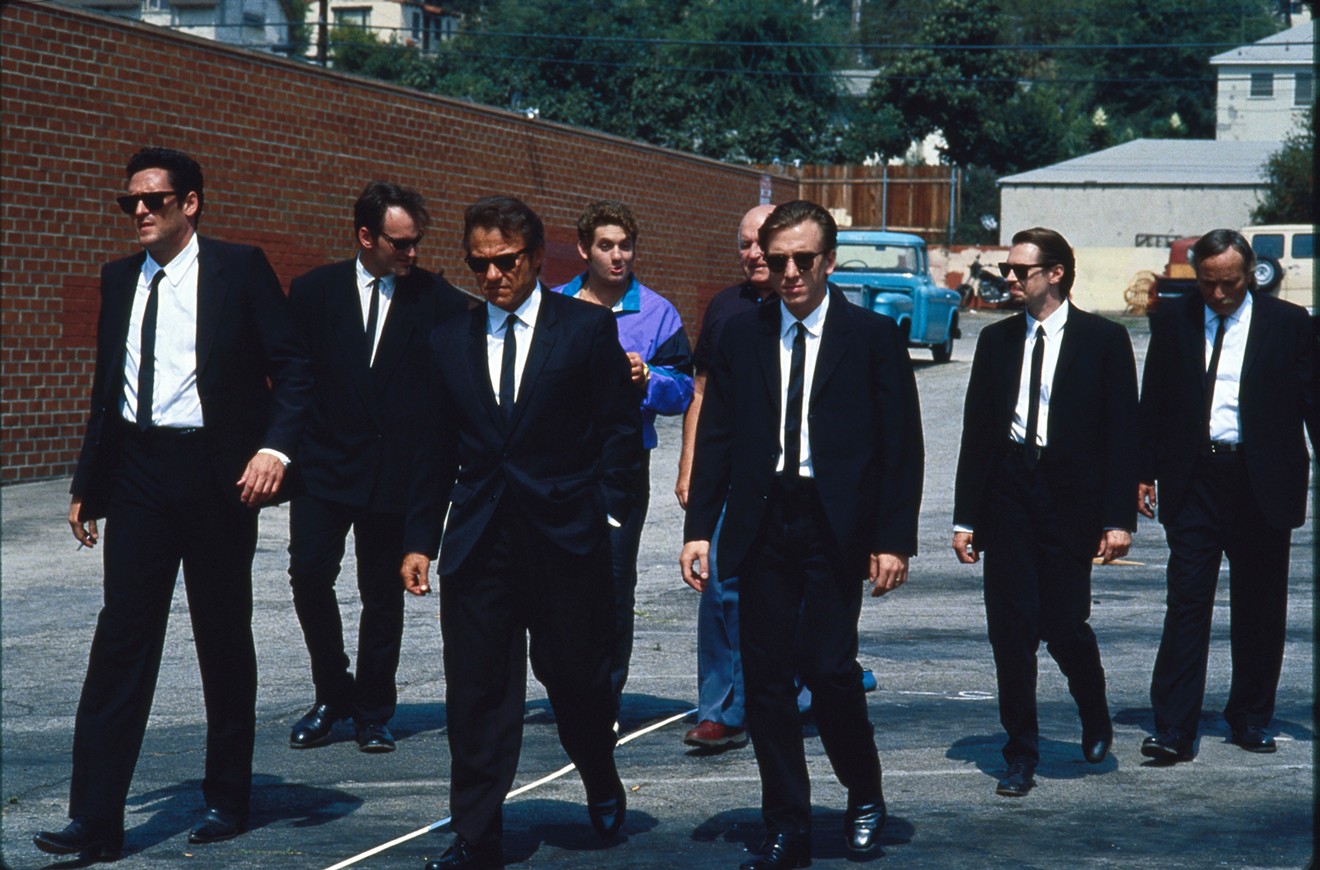Despite my fondness for Quentin Tarantino, I’ve never been a Reservoir Dogs fan. Back in 1992, the writer-director’s feature debut seemed to me little more than a clever and grotesquely violent one-act play, gussied up with structural whimsy. Yes, the opening scene — black-suited crooks bantering about Madonna and the ethics of tipping — was funny. But the characters played like a collection of tics and attitudes rather than real people. And as the pop-cultural references piled up, the film seemed to lose energy and flirt with pointlessness. I knew this guy Tarantino was going places, but this felt like an exercise, not a movie.
As they say, things change. A recent revisit made the picture come alive for me in a way it never had before, clarifying both its problems and its strengths.
With the exception of his one literary adaptation, Jackie Brown, has Tarantino ever been able to tell an actual feature-length story? None of the interlocking stories in Pulp Fiction would work on its own, and yet, put together, they’re sublime. On a purely narrative level, sometimes he overshoots, as he does in Django Unchained, which he seems not to know how to end, and Kill Bill, which is almost all middle. And sometimes he underbakes, as he does in Death Proof, which has no middle.
And yet, he has somehow turned this into his greatest strength. Put another way: I love Death Proof, with its strange two-act structure. Nor would I want to have the sprawling, episodic Kill Bill and its two “volumes” any other way. And Pulp Fiction has a power that a cleanly told, properly sequenced version of those tales never could. Same goes for Inglourious Basterds.
It now seems clear to me that Reservoir Dogs, too, makes an asset of its shortcomings. I still don’t quite buy any of these characters, but I’m not so sure I was ever supposed to. Consider the sequence that now seems like the film’s central moment: the “amusing anecdote about a drug deal” that Tim Roth’s Mr. Orange (who is really an undercover cop named Freddy) has to memorize and tell in order to convince the other crooks he’s one of them.
As his superior Holdaway (Randy Brooks) explains, after handing him a four-page script for the anecdote, “To do this job, you gotta be a great actor. You gotta be naturalistic. ... An undercover cop has to be Marlon Brando.”
The references to acting (and, by extension, to filmmaking) aren’t coincidental. As Freddy rehearses his script, Tarantino turns the progression of the anecdote into a depiction of the character’s development: First, we see Freddy in his room, practicing, pages in hand. Then we see him in front of a graffiti-covered wall, essentially performing on a makeshift stage for Holdaway. Then we see him in a bar, as Mr. Orange, actually relating the anecdote to the other robbers. Finally, we see him in the story itself, living through the events of the made-up tale, which turns out to be a silly little thing about encountering some cops and their drug-sniffing dog in a men’s room during an inopportune moment.
It’s also not coincidental that Freddy’s tale itself is written very much in the Tarantino vernacular — complete with random digressions and details, because, as Holdaway explains, “the details’ll sell your story.” In essence, this sequence explains the unusual, slightly stilted, two-degrees-removed-from-reality atmosphere of Reservoir Dogs, which is a film all about performance and posturing.
Everybody in this movie, with their made-up names and their tough-guy talk, is playing a part. And it goes beyond just these particular crooks. Those endless pop-culture references help expand the film’s scope beyond the people onscreen, speaking to the way that, by 1992, we had come to build our own characters and realities — through the details and the attitudes we collected around us. Tarantino pulls the rug out from under his characters, but he turns his lens toward us. He transforms an unremarkable story into an existential treatise.
[
{
"name": "Air - MediumRectangle - Inline Content - Mobile Display Size",
"component": "18855504",
"insertPoint": "2",
"requiredCountToDisplay": "2"
},{
"name": "Editor Picks",
"component": "17105533",
"insertPoint": "4",
"requiredCountToDisplay": "1"
},{
"name": "Inline Links",
"component": "18349797",
"insertPoint": "8th",
"startingPoint": 8,
"requiredCountToDisplay": "7",
"maxInsertions": 25
},{
"name": "Air - MediumRectangle - Combo - Inline Content",
"component": "17105532",
"insertPoint": "8th",
"startingPoint": 8,
"requiredCountToDisplay": "7",
"maxInsertions": 25
},{
"name": "Inline Links",
"component": "18349797",
"insertPoint": "8th",
"startingPoint": 12,
"requiredCountToDisplay": "11",
"maxInsertions": 25
},{
"name": "Air - Leaderboard Tower - Combo - Inline Content",
"component": "17105535",
"insertPoint": "8th",
"startingPoint": 12,
"requiredCountToDisplay": "11",
"maxInsertions": 25
}
]











